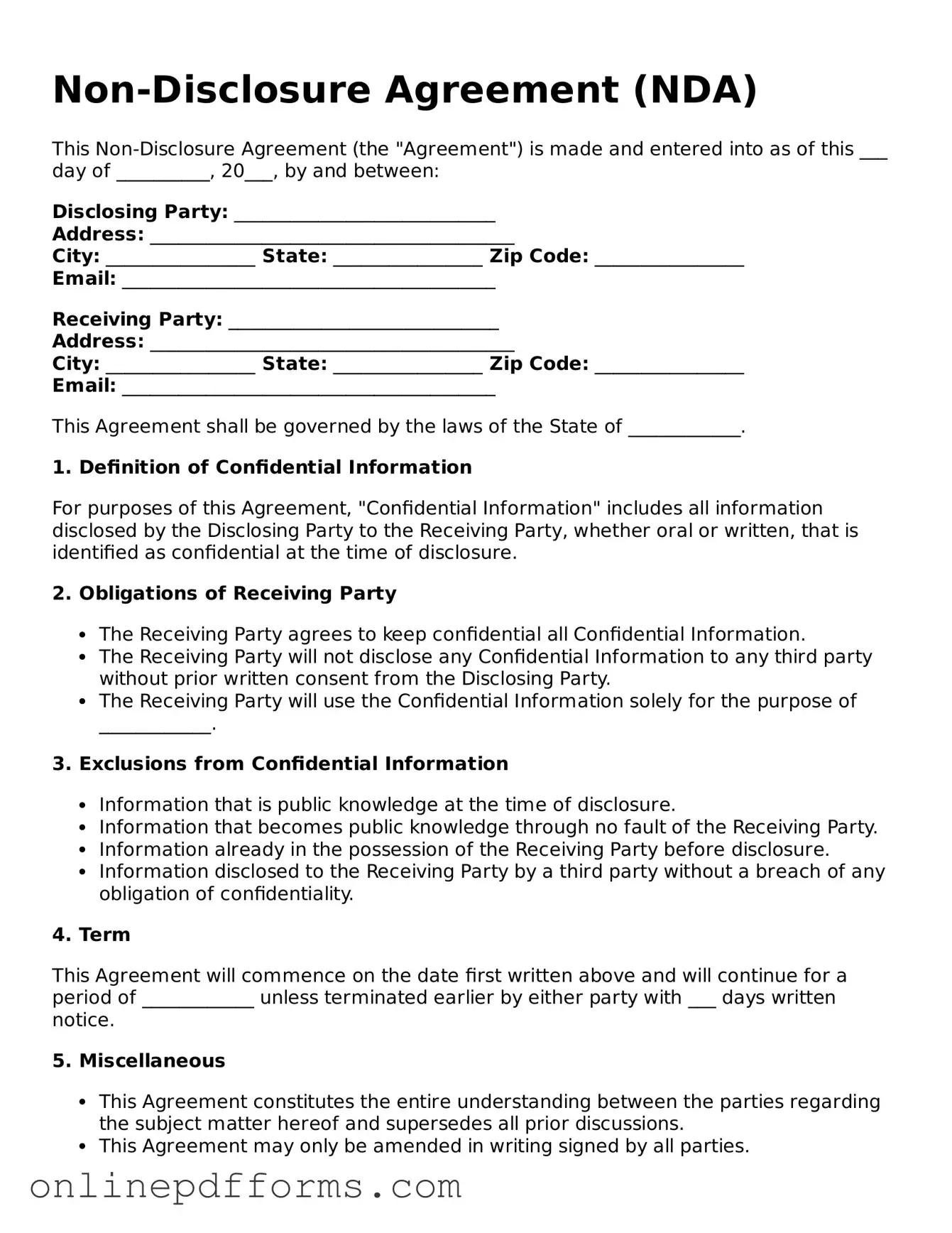Legal Non-disclosure Agreement Form
A Non-disclosure Agreement (NDA) is a legal contract that establishes a confidential relationship between parties, ensuring that sensitive information shared during business dealings remains protected. This form is essential for safeguarding trade secrets, proprietary information, and other confidential data. To take the next step in protecting your information, fill out the NDA form by clicking the button below.
Open Non-disclosure Agreement Editor Now
